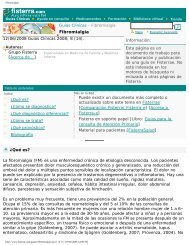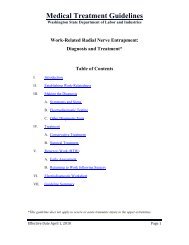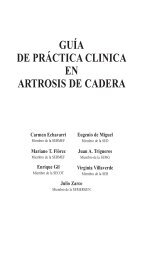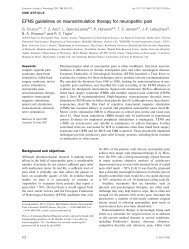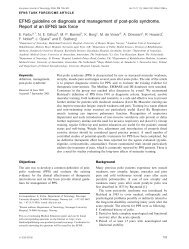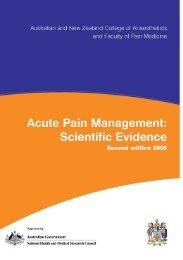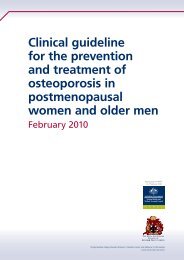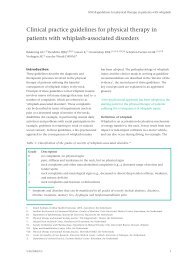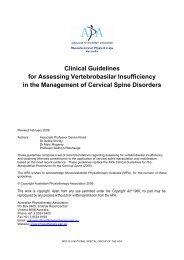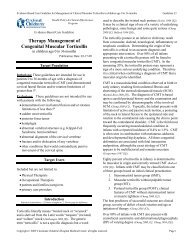Rheumatoid Arthritis
Rheumatoid Arthritis
Rheumatoid Arthritis
Create successful ePaper yourself
Turn your PDF publications into a flip-book with our unique Google optimized e-Paper software.
<strong>Rheumatoid</strong> <strong>Arthritis</strong>A Guide for Adult PatientsEffective Date: May 1, 2006What is <strong>Rheumatoid</strong> <strong>Arthritis</strong>?<strong>Arthritis</strong> is a term used to describe conditions that involve pain and inflammation in the joints. Thereare over 100 different types of arthritis. <strong>Rheumatoid</strong> <strong>Arthritis</strong> (RA) is the most common type ofinflammatory arthritis. When a joint is inflamed it is painful, swollen, hot and stiff. This inflammationis in the lining of the joints, and if it is not controlled, it will cause permanent damage to the bone andcartilage. RA affects ~1% of the adult population and affects women more than men. RA can start atany age but most commonly occurs in the 30-50 age group.What is the cause of <strong>Rheumatoid</strong> <strong>Arthritis</strong>?The cause of RA is not yet known but there is continuing research. It seems most likely that a virustriggers the person’s immune system to react in an abnormal way. This produces inflammation in thelining of the joints. We don’t know why this causes continuing joint inflammation. We do know thatthere is an inherited gene that makes some people more likely to get RA. Not everyone with this genewill get RA.How do I know if I have <strong>Rheumatoid</strong> <strong>Arthritis</strong>?When RA starts it may be sudden or gradual. The pain or stiffness with swelling in joints is usuallyworse in the morning. Any joint may be involved but it commonly starts in the fingers, wrists and feet.RA usually involves many joints but at onset there may be only one or two joints affected. Your doctorwill look for clues that might suggest the joint inflammation could be another type of arthritis. Bloodtests help give clues but there is no blood test to completely diagnosis RA. It often takes months toconfirm a diagnosis of RA.What treatments are available?Modern medications can control most of the joint inflammation. There is no cure at this time but theimpact of RA can be minimized. It is important to start medications early. Your doctor will discussthese with you and probably will refer you to an arthritis specialist or rheumatologist. It is important toremember that the small risks associated with medications are worth taking to prevent permanent jointdamage.Regular exercise is important. With painful joints you may need to see a physical therapist. You willlearn how to exercise inflamed joints safely and how to stay fit. An occupational therapist can adviseyou how to reduce stress to your joints while continuing your daily activities.Lifestyle issues are also important. These include a healthy diet, weight control, reducing stress,stopping smoking and proper rest.What can I do?Learn more about the disease and work towards meeting self-management and lifestyle goals.Take an active role, as a partner with your physician, in treating your RA. Talk to your family doctorif you have concerns about: nutrition, exercise, support groups, stress and depression, sexual/reproductive health, financial and employment issues (pension and housing), and child care support.




